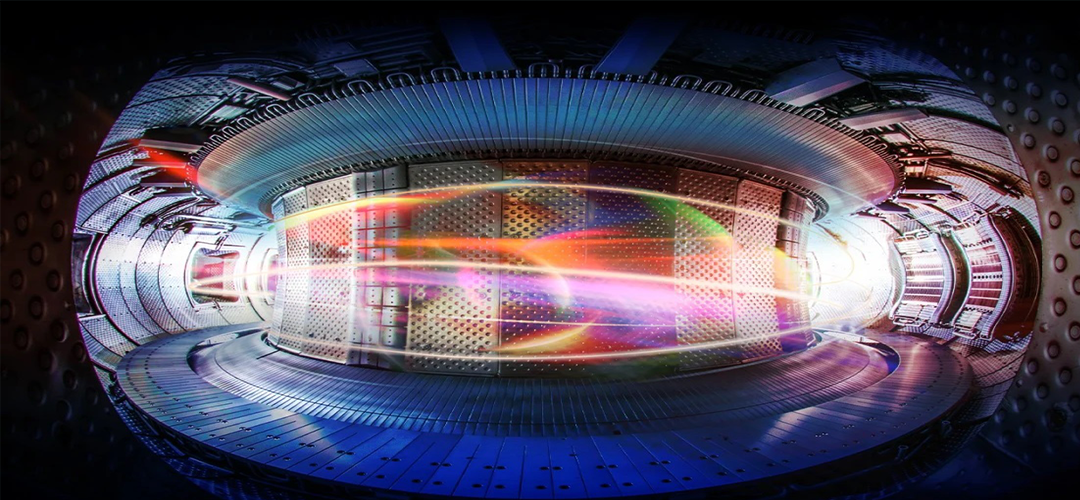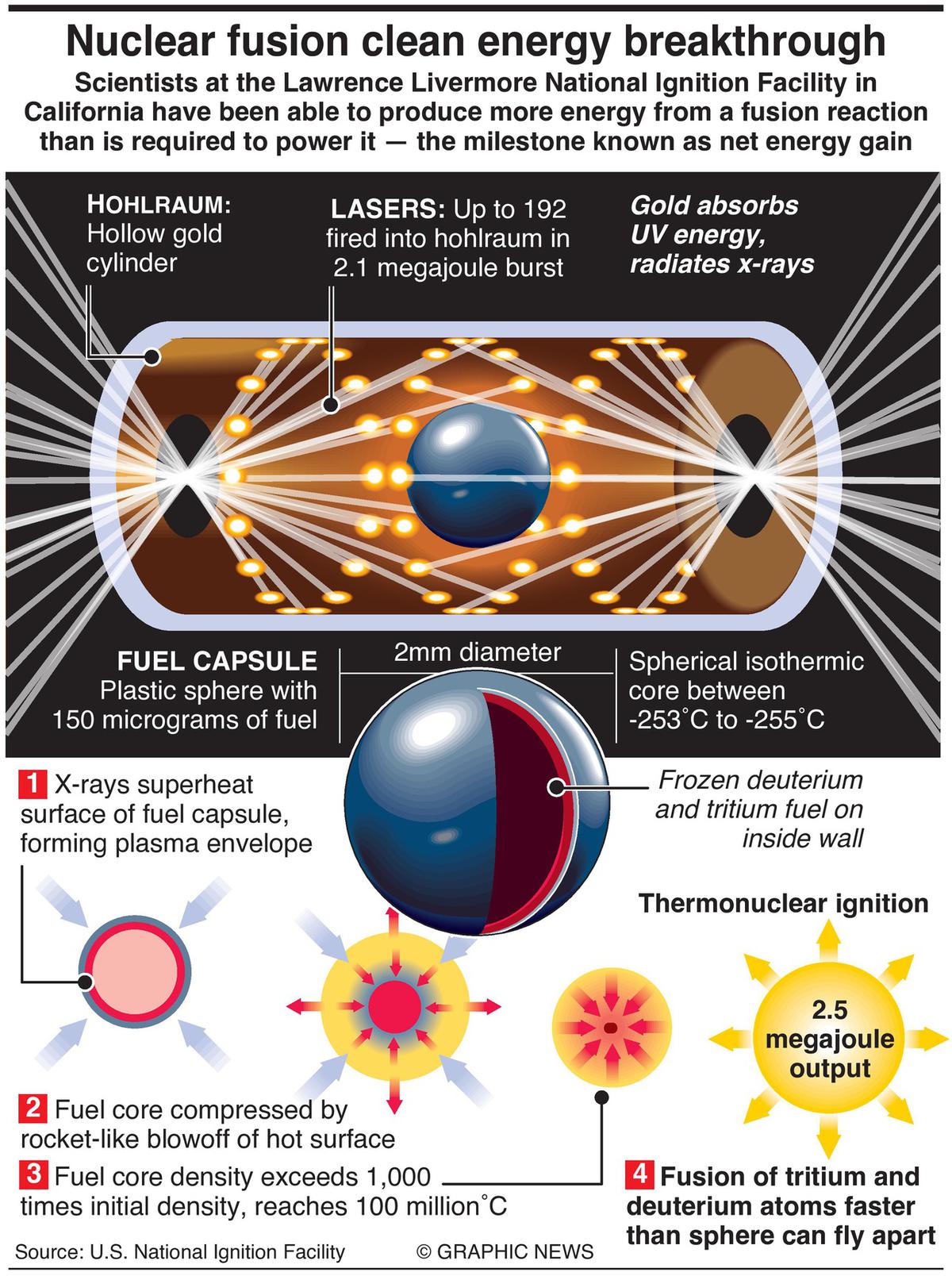A STAR IS BORN?
December 17, 2022 | Expert Insights

For more than 60 years, using nuclear fusion – the energy source of the stars – to produce copious amounts of clean energy has been one of science's most ambitious and difficult goals.
On December 13th, U.S. Energy Secretary Jennifer Granholm created a global media sensation when she declared that the nuclear fusion experiment conducted by scientists replicated "certain conditions that are only found in the stars and sun."
The breakthrough was reportedly at the Lawrence Livermore National Laboratory's National Ignition Facility (NIF) in California. What has been intriguing is that for the first time, a "net energy gain" has been achieved, meaning that the experiment generated more fusion energy than was input, a significant first step in the long search for fusion energy.
Background
It is said that nuclear fusion is the "holy grail" of energy generation; the Sun and other stars are energised by it. It functions by fusing two pairs of light atoms; this "fusion" generates a lot of energy. It is unlike nuclear fission, which involves the splitting apart of heavy atoms.
The method currently utilised in nuclear power plants is fission which produces a lot of dangerous radioactive waste with a long half-life. Nuclear waste needs expensive and elaborate storage to prevent its leaking out into the environment, where it will kill all types of life forms.
Far more energy is produced via nuclear fusion, and only trace amounts of radioactive waste are left behind. Additionally, and more significantly, the process doesn't emit any greenhouse gases, preventing it from causing climate change.
However, one of the difficulties is that fusion requires extremely high temperatures and pressures to force and maintain the atoms together. No experiment has yet been able to generate more energy than was required to make it operate. At most, some of these processes have generated "near breakeven energy."

Analysis
On December 5th, 2.05 megajoules of energy were directed onto a tiny cylinder containing a pellet of frozen deuterium and tritium, heavier forms of hydrogen. Because of the pellet's compression, the hydrogen inside fused, resulting in extremely high temperatures and pressures. The fusing atomic nuclei produced 3.15 megajoules of energy, around 50 per cent more energy than was required to heat the pellet. Although the explosion lasted less than a billionth of a second, its impact will be everlasting. Scientific breakeven, or net energy gain, is the long-term goal of fusion research. Simply put, this is among the most remarkable scientific accomplishments of the twenty-first century.
NIF has demonstrated its ability to create "ignition," a condition of matter that can easily maintain a fusion reaction, by attaining scientific breakeven. The entire field of thermonuclear fusion will alter once the ignition conditions can be thoroughly studied. However, the breakthrough does not imply that fusion is a viable energy source. The energy generated by the NIF reaction was greater than that utilised by the reactor to heat the atomic nuclei, but it was not greater than the total energy consumed by the reactor. However, after years of effort, scientists have significantly advanced toward fusion power.
Despite NIF's success, it would be difficult to commercialise this type of fusion reactor. To cover its energy needs and supply power to the grid, such a reactor would need to produce 50-100 times more energy than its lasers emit. Additionally, it would need to vaporise ten capsules every second for extended periods of time. Fuel capsules are currently very expensive to produce and rely on tritium, a short-lived radioactive hydrogen isotope that future reactors need to produce locally.
Nevertheless, many of these difficulties aren't specific to NIF, and fusion labs and businesses around the globe are working to overcome them. The Joint European Torus (JET), a research reactor located in Culham, England, broke the previous record for the quantity of fusion energy released in a single trial run last year. International Thermonuclear Experimental Reactor (ITER), a massive worldwide experiment that will replace JET, is now being built in France. Additionally, commercial businesses in the U.S. and the UK have developed new superconducting magnets that could aid in the development of smaller, more potent reactors.
It's difficult to predict whether or when this work will result in a new energy future. However, fusion scientists believe that the technology will be a fantastic tool for humanity whenever it is prepared—whether that be in 20, 50, or 100 years.
Assessment
- Even though the feat is noteworthy, in practical terms, it is nothing more than baby steps towards the ultimate objective of using fusion processes to generate clean electricity.
- There is still a long road ahead to negotiate. In the interim, the environment needs fewer fossil fuels and more renewables so that the planet can survive long enough to enjoy the fruits of sustainable fusion energy whenever it is made a sustainable source.








Comments